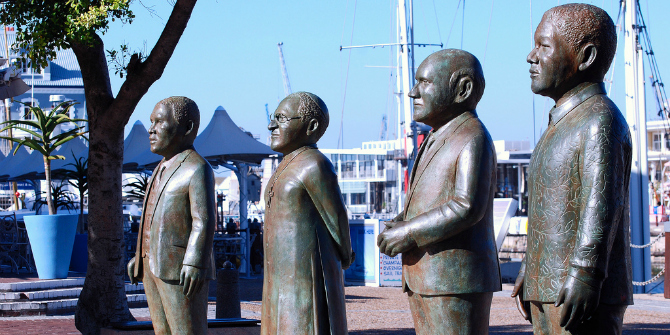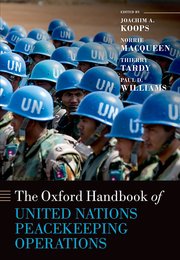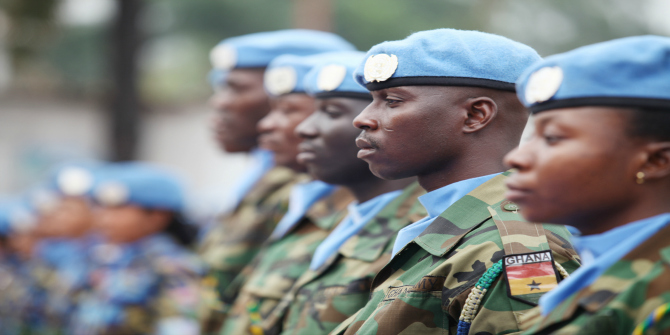
Introduction
Thirty-six years have passed since the June 1967 war between the State of Israel and its Arab neighbors. Despite the passage of time, the role played by the Kremlin in the events which led to this armed conflict and during the war, remains to this day an enigma. Scholars have debated the question of the extent to which the Union of Soviet Socialist Republics (USSR) was responsible for the outbreak of hostilities in the Middle East on 5 June 1967. Some researchers have argued that Moscow instigated the war in order to increase Arab dependence on Soviet aid, as well as to unify progressive forces in the Middle East and to further consolidate its position in the region.[1]According to one historian, Soviet leaders sought a limited Arab-Israeli war and had no desire to bring about the destruction of Israel. They saw no major risk in a limited armed conflict between Israel and Arab countries, and thought that "…it would be useful to shake up their Arab clients a bit…." Their conception was that the Arab armed forces were well-quipped and sufficiently prepared for any armed conflict with the Israeli Defense Forces (IDF).[2]
Other scholars contend that the Soviet leadership was divided on Middle East policy as a result of a power struggle between members of the collective leadership which had overthrown Nikita Khrushchev in October 1964. According to this interpretation, Soviet Premier Alexei Kosygin, President of the Supreme Soviet Nikolae Podgorny, and Minister for Foreign Affairs Andrei Gromyko were skeptical as to whether their Arab clients were prepared to go to war against Israel. They all supposedly advocated a cautious policy towards the Middle East designed to avert the danger of an armed conflict between the USSR and the United States following a war between Israel and Arab countries. The Secretary of the Soviet Communist Party (CPSU), Leonid Brezhnev and his new political ally, Defense Minister Marshall Andrei Grechko, however, pursued an adventurous policy course which led to escalation of the Arab-Israeli conflict. Hence, according to this view, the Six-Day War was a conspiracy designed to precipitate an armed conflict in the Middle East and to improve the domestic position of both Brezhnev and Grechko.[3]
Nikita Khrushchev's memoirs, as well as the reminiscences of Soviet military and intelligence personnel, also indicate that Moscow indeed sought escalation of Middle Eastern tensions leading to the outbreak of another war between Israel and its Arab neighbors. The Soviet high command seemed to have encouraged high-ranking Egyptian and Syrian officers to go to war against Israel, and persuaded the political leadership to support its designs. Moreover, the Soviet military took practical steps to assist Syria in stopping the advance of Israeli troops into Syrian territory toward the end of the war. These steps included a naval landing, airborne reinforcements and air support for ground operations. Military operations were, however, eventually aborted for fear of American retaliation and due to dissension within the Kremlin.[4]
A third interpretation argues that Moscow had no desire to encourage its Arab clients to wage war against Israel. By contrast, it wished to avert the danger of a potential Israeli military attack on Syria. But Egyptian President Gamal Abd el-Nasser misinterpreted Moscow's intensions and blocked the Gulf of Aqaba without the Kremlin's knowledge, or at least without its full consent. This action served as a casus belli for the Israeli Government and led to the outbreak of hostilities in the region.[5]
New archival evidence from Poland sheds light on the role played by the USSR in the events leading up to the outbreak of the Six Day War and during the conflict. This evidence is based on Leonid Brezhnev's secret report at a plenary session of the Central Committee of the Soviet Communist Party (CC CPSU) held on June 20, 1967 entitled "On Soviet Policy Following the Israeli Aggression in the Middle East." A copy of Brezhnev's brief was translated into Polish and subsequently circulated among the leadership of the Polish Communist Party. This Polish record was acquired as part of a recent research project on the Cold War in the Middle East undertaken by the Chaim Herzog Center for Middle East Studies and Diplomacy at Ben-Gurion University of the Negev in Israel in cooperation with CWIHP.[6]
Brezhnev's report shows that Moscow had no intention of inciting an armed conflict in the Middle East and that the June 1967 war was the result of grave miscalculations and of Soviet inability to control the Arabs, rather than a conspiracy. The brief documents that throughout April-May, 1967, the Kremlin suspected that Israel was planning an act of aggression against Syria. Determined to forestall the Israeli offensive and to rescue the new radical-left regime in Damascus, the Soviet government informed Egypt that Israel had mobilized its armed forces on the border with Syria. By doing so, Moscow hoped to manipulate Nasser into assisting Syria by concentrating his armed forces on Egypt's border with Israel. The Kremlin estimated mistakenly, as if turned out – that Israel was militarily weak and could not cope with a war on two fronts. Subsequently, Moscow consented to the ejection of United Nations (UN) peacekeeping forces from outposts on the Israeli-Egyptian border, and to the concentration of Egyptian troops on the Sinai Peninsula and the Gaza Strip.
Brezhnev's account suggests that after the situation in the Middle East deteriorated in May 1967, Moscow was no longer able to control the crisis. The Soviets were taken aback when Nasser blocked the Gulf of Aqaba without having consulted them. Israel's surprise attack and rapid victory within six days alarmed the Soviet leadership. Moscow, however, was not inclined to take any military action against Israel. Nor it was willing to airlift weapons to its Arab clients while hostilities continued. The Soviet leaders doubted that their Arab clients were capable of fighting any further. They concentrated instead on the diplomatic front and sought cease-fire agreement mediated by the UN. Such an accord would stop the Israeli offensive, restore the status quo ante in the Middle East, and force Israel to withdraw to the prewar border. It was only when the occupation of the Syrian capital by IDF seemed imminent that the Kremlin sharply increased pressure upon Israel and even resorted to military threats. At that point the President Lyndon B. Johnson intervened in the conflict and persuaded the Israeli Government to stop the fighting.
Soviet Perceptions of Israel and the Six Day War
The first part of Brezhnev's report indicates that the Soviet leader's perception of the Six-Day War was rigidly defined by his doctrinaire outlook on international affairs. As the document clearly demonstrates, Brezhnev perceived the Israeli attack on Egypt and Syria as an act of aggression supported by the US and West European powers. He dismissed Western attempts to portray the Six-Day War as a local conflict resulting from the protracted quarrel between Arabs and Jews. He vigorously claimed that the Israeli attack was part of a worldwide campaign designed to suppress the anti-colonial struggle and hamper the turn to socialism in the progressive societies of Asia, Greece, Africa and Latin America.
Brezhnev described Israel as a tool in the hands of Western imperialism, and claimed that the Israeli assault had been planned carefully by the West. According to him, Israel's military campaign aimed at overthrowing the progressive regimes in the Middle East, diminishing the influence of the USSR on its Arab clients, and restoring the predominant position which Western powers had held in this region until the mid-1950s. To support this thesis, the Soviet leader claimed that prior to the June 1967 war, Israel had received massive military supplies from the West and its armed forces had been equipped with the most modern assault weapons.[7]
In the brief, Brezhnev dismissed allegations that the Soviet government had encouraged both the Egyptians and the Syrians to threaten Israel. He claimed that Moscow's military aid to its Arab clients was mainly designed to assist them in their protracted struggle against colonialism, to consolidate their independence, and to improve their capability to defend themselves against both external and internal dangers. Moreover, the Soviet leader indicated that his government feared that a potential suppression of regimes in Cairo and Damascus might lead to the collapse of the anti-colonialist movement in the Middle East. Subsequently, the regional and global balance of power would tilt in favor of the West.[8]
Soviet Miscalculations and Failure to Control the Mid-May 1967 Crisis
In his overview of events which led to the outbreak of hostilities on 5 June 1967, Brezhnev pointed out that in mid-May 1967, Moscow had received information that Israel was contemplating a military campaign against Syria and other Arab countries. In light of this information, the Politburo of the CPSU decided to inform the Egyptian and Syrian governments of Israel's plans for aggression. Unfortunately, Brezhnev refrained from revealing critical information about the controversial Soviet warnings regarding the build-up of an Israeli assault against Syria. He limited himself to saying that "…there were many signs that led us to conclude that a serious international crisis was in the making and that Israel had prepared an act of aggression supported by Western powers…."[9]
Before the CPSU Plenum Brezhnev stressed the fact that the Kremlin had no desire to incite war between Israel and its Arab neighbors. Moscow only intended to contain the State of Israel and to forestall its aggressive plans. The brief reveals that the Soviet government gave its consent to Egyptian actions which led to the withdrawal of UN forces and to the concentration of troops along the 1949 armistice line between Egypt and Israel. It shared the Egyptian's government's view that these steps would deter Israel from waging war against Syria. However, Moscow's reaction to the closure of Straits of Tiran was lukewarm. Brezhnev considered the action misconceived, and he deplored the fact that Nasser had failed to consult the Kremlin before taking such a step. While the Soviet leader agreed that the ill-advised closure of the Gulf of Aqaba had indeed brought some prestige to the Egyptian president, he claimed that it provoked Israel to conduct a wider military campaign against its Arab neighbors.
Brezhnev's report indicates that following the closure of the Straits of Tiran, Moscow was determined to avert further deterioration in the Middle East and to foil Israeli and Western plans for aggression. Fear that the blockade of the Gulf of Aqaba might provoke Israel into war led Moscow to exert diplomatic pressure upon the Israeli government. Simultaneously, Moscow did its utmost to tone down the belligerent rhetoric of Egyptian and Syrian leaders and to assure that no further provocation be taken against Israel. Brezhnev revealed that during a meeting of the CC CPSU held on 30 May 1967, Syrian President Nur al-Din Atassi, then on an official visit to Moscow, had been asked to avoid taking any steps which could be used by Israel as a pretext to wage war against Syria. A similar request was conveyed in a note to Nasser on 26 May 1967. The Egyptian president was asked to do his utmost to prevent armed conflict with Israel. Both Nasser and his Minister of War, Shams al-Din Badran, who visited the Soviet capital on 28 May 1967, assured Soviet officials on several occasions that Egypt did not plan to resort to armed conflict or to provoke Israel to wage war.[10]
Restrain and Concentration on the Diplomatic Front
Brezhnev's report reveals that Israel's surprise attack on three fronts and the rapid victory over Egypt, Syria and Jordan was a bombshell for Moscow. Prior to the outbreak of hostilities, Soviet leadership operated under the illusion that Arab armed forces could easily repel any Israeli offensive and defeat the IDF on the battlefield. In retrospect, Brezhnev assured his audience that the armed forces of Egypt, Syria, Algeria and Iraq were superior to the IDF in number of troops and amount of tanks, planes, ships and armaments. They had been equipped with the most modern weapons, and had received high-level training from Soviet and other East European instructors. However, their fighting capacity and morale were very low. They were backwards, undisciplined and poorly organized. In spite of their alleged superiority over Israel in arms and military personnel, the Arabs lost most of their air power during the initial phase of the Israeli offensive. Left without an air umbrella and anti-aircraft defense, their ground forces suffered heavy losses.[11]
Brezhnev's account of the events clearly shows that following the disintegration of the Egyptian army and the rapid advance of Israeli troops into Sinai, Moscow decided to pursue a policy course designed to stop the offensive and to guarantee the survival of Nasser's regime. The Kremlin, however, had no desire to intervene actively in the fighting on the side of its Arab clients. Nor did it plan to supply them with arms to replace weapon systems destroyed in the fighting. Instead, Moscow concentrated on the diplomatic front. According to Brezhnev, the Kremlin sought an early cease-fire to stop the Israeli offensive. Then it planned to force an Israeli withdrawal to the prewar borders.
Brezhnev's brief reveals that on midnight of 7 June 1967, Egyptian Vice-President Marshal Amr informed the Soviet ambassador in Cairo that the situation on the Egyptian-Israeli front was critical and asked that a cease-fire agreement between his country and Israel be achieved within five hours. One hour later, members of the CPSU Politburo held an emergency session to discuss ways to help Egypt out of this difficult situation. According to Brezhnev's report, members of the Politburo were fully aware that the Egyptian army was in a state of chaos and confusion, and that it could not repel the Israeli attack. They ruled out the possibility of airlifting military supplies to Egypt while hostilities continued, something that would be impossible to arrange within a short period of time. Moreover, they were skeptical whether Soviet aircraft carrying supplies could safely land on Egyptian airfields which had been destroyed by the Israeli Air Force.[12]
The report clearly shows that the Politburo feared that Nasser's regime would not survive the Israeli offensive. Therefore, the Soviet leadership was determined to achieve an early cease-fire agreement, mediated by the UN. On June 7, 1967, the UN Security Council adopted a draft resolution which called for an immediate cease-fire in the Middle East. The IDF continued the offensive, despite this appeal and a second UN resolution calling for an early cease-fire. Subsequently, Moscow issued a stern warning to the Israeli government threatening to reassess its relations with Israel and to consider other means if the offensive continued.
But Brezhnev's report reveals that Nasser, too, was not ready to accept a cease-fire as yet. As the brief indicates, the Soviet leader deplored Nasser's vacillation that in itself served as an obstacle to Moscow's attempts to ensure Israeli compliance with UN resolutions. Only on 9 June 1967, did the Egyptian government announce its willingness to agree to a cease-fire but it was too late. By this time, the IDF had completed its occupation of the entire Sinai desert and had launched an offensive against Syria.
To Moscow policy makers, the offensive against Syria was another stage in the imperialist campaign against radical-left regimes in the Middle East. Determined to save Syria from a humiliating defeat and occupation, the Soviet government attempted to force Israel to comply with the two Security Council resolutions. On 8 June 1967, it instructed its ambassador to the UN to draft another resolution calling for an immediate cessation of hostilities and the withdrawal of Israeli troops to the 5 June 1967 border. The next day, heads of government and the leaders of communist parties in Eastern Europe gathered to discuss the Middle East crisis. At the end of this urgently convened conference, held in Moscow, a communiqué was issued by the Communist delegations condemning Israel as an aggressor, and calling upon the Israeli government to stop the offensive and pull its troops out of Syrian territory without delay.[13]
Brezhnev relates that this communiqué made little impression upon Israel, which continued its campaign against Syria. On 10 June 1967, the IDF captured the town of El-Quneitra, one of the Syrian army's main strongholds on the road to Damascus. Syria's panicked foreign minister informed the Soviet Government that Israeli tanks, supported by aircraft, were advancing on the Golan Heights in the direction of the Syrian capital. He asked that all possible measures be taken by Moscow to forestall the attack, otherwise it would be too late for his country.
The Soviet Government perceived the occupation of El-Quneitra as another critical turning point in the June 1967 war. Subsequently, it rushed to stop the Israeli offensive entirely. A Soviet missile cruiser and a number of submarines based in the Mediterranean Sea were ordered to set sail immediately for the Syrian coast. On the afternoon of 10 June 1967, the Soviet government broke off diplomatic relations with Israel. In a note to the Israeli government, Moscow accused Israel responsible of the brutal violation of successive UN resolutions calling for a cease-fire in the Middle East. The Soviet government also threatened to impose sanctions upon Israel if it did not stop immediately the military campaign.
Other Eastern European countries followed suit and broke off diplomatic relations with Israel. In retrospect, Brezhnev claimed that this was a spontaneous action, and that it had not been planned or discussed by the Soviet and Eastern European leaders during their urgent consultations in Moscow. The USSR and other Eastern European countries felt a sense of urgency following the defeat of their Arab allies. Therefore, they were willing to take concerted action to stop the penetration of Israeli troops into Arab territories.[14]
Brezhnev's report indicates that Moscow simultaneously conveyed an ultimatum to President Johnson. The first part of the Soviet ultimatum was a strongly-worded complaint about Israel's non-compliance with the UN resolutions which called for an immediate cease-fire in the Middle East. The Soviet government then urged the US president to persuade the Israeli government to halt the offensive without delay. It threatened to take any necessary action, including military action, if Israel failed to stop the fighting within the next few hours.
According to Brezhnev's report, this ultimatum bore fruit. Faced with Soviet pressure, Washington forced the Israeli government to comply with the Security Council resolutions and stop the advance of its armed forces into the heart of Syria. Johnson informed Brezhnev that Secretary of State Dean Rusk had sent to the Israeli government an urgent message demanding that Israel immediately implement all Security Council resolutions. In response, the Israeli government expressed its willingness to comply with UN resolutions and, subsequently, ended its offensive against Syria on the evening of 10 June 1967.[15]
Conclusion
Brezhnev's confidential report to the CC CPSU does not shed light on the controversial information regarding the concentration of Israeli troops on the Syrian border, conveyed to the Egyptians by the Soviet government in mid-May 1967. Nor does it link this action with the outbreak of hostilities in the Middle East a few weeks later. The report seems apologetic in tone, with the Soviet leader attempting to avoid being held accountable for the provocation which led Arab leaders to resort to bellicose actions. In turn, these actions spurred the Israeli preemptive attack and resulted in the humiliating defeat of both Egypt and Syria, the disintegration of their armed forces and the occupation of the entire Sinai desert, West bank and Golan Heights by Israel. As the brief indicates, the Soviet leader held Nasser solely responsible for this catastrophe. He claimed that the reckless closing of the Tiran Straits to the passage of Israeli ships provoked Israel to conduct a wider military campaign against its Arab neighbors.
The report suggests that the Kremlin had no desire to incite an armed conflict between its Arab clients and the State of Israel, and that the June 1967 war was a result of Moscow's clumsy diplomacy, grave miscalculations and inability to control the crisis which it had provoked. It grew out of a determination to foil Israel's aggressive plans against Syria and to frustrate what it suspected was a joint Israeli-imperialist scheme to suppress progressive forces in the Middle East. The Kremlin assumed that these plans were part of a Western campaign aimed to overthrow radical-left regimes in the Middle East and to undermine the predominant position which the USSR had maintained in the region since the mid-1950s. The brief demonstrates that Moscow operated under the illusion that Israel was militarily weak and could not risk war on two fronts. It estimated that preventive action would deter Israel from waging war against Syria.
This Polish record indicates that after the outbreak of hostilities, Moscow had no plan to actively intervene in the fighting on the side of its Arab clients, nor did it take any steps to invade Israel, as suggested by some scholars. Brezhnev's account of the Six Day War reveals that during this armed conflict, the Kremlin's occupants preferred the diplomatic front to military action. They were not even willing to deliver vital supplies of armaments, tanks and airplanes to their Arab clients while hostilities continued. Politburo members were fully aware that Egypt's armed forces had disintegrated and could not continue fighting. Brezhnev's brief suggests that Moscow's sole plan was to exert diplomatic pressure upon Israel to agree to an early cease-fire and pull its armed forces out of occupied territories. By pursuing this plan, Moscow hoped to stall the Israeli offensive and guarantee the survival of the radical-left regimes in the Middle East. With the Israeli government defiant and reluctant to comply with a series of UN resolutions calling for an immediate cease-fire, the USSR and the majority of its Eastern European satellites responded in what Brezhnev described as a spontaneous act of breaking off diplomatic relations with Israel. Simultaneously, the Soviet government concentrated a small naval contingent near the Syrian coast. It also put pressure upon the US president to use his influence with the Israeli government to persuade it to stop its military operation against Syria without delay.
















 Image Credit: UN Peacekeepers Day 2013 Celebration in the DR Congo (
Image Credit: UN Peacekeepers Day 2013 Celebration in the DR Congo (


 Image Credit: Makey Makey (
Image Credit: Makey Makey (